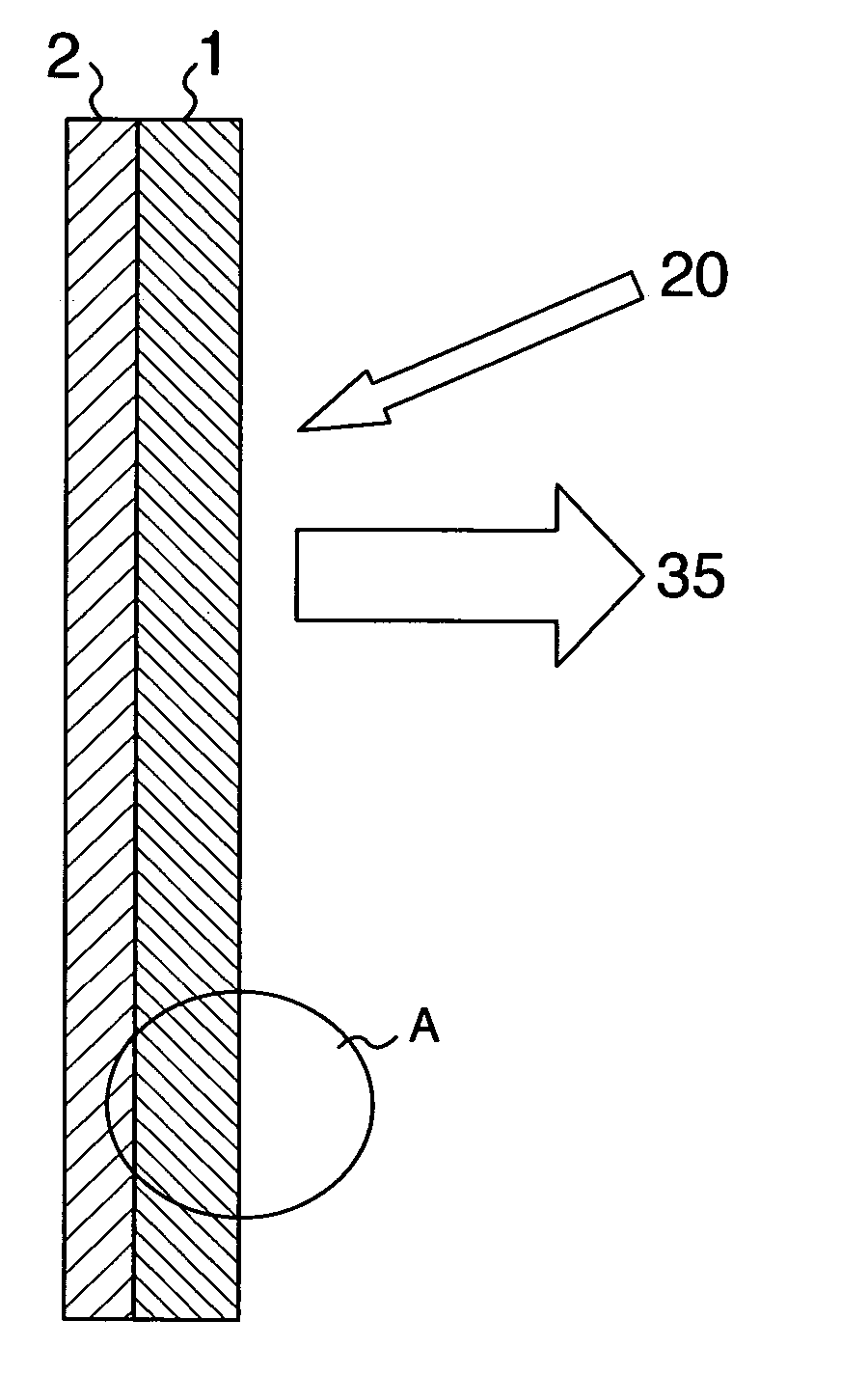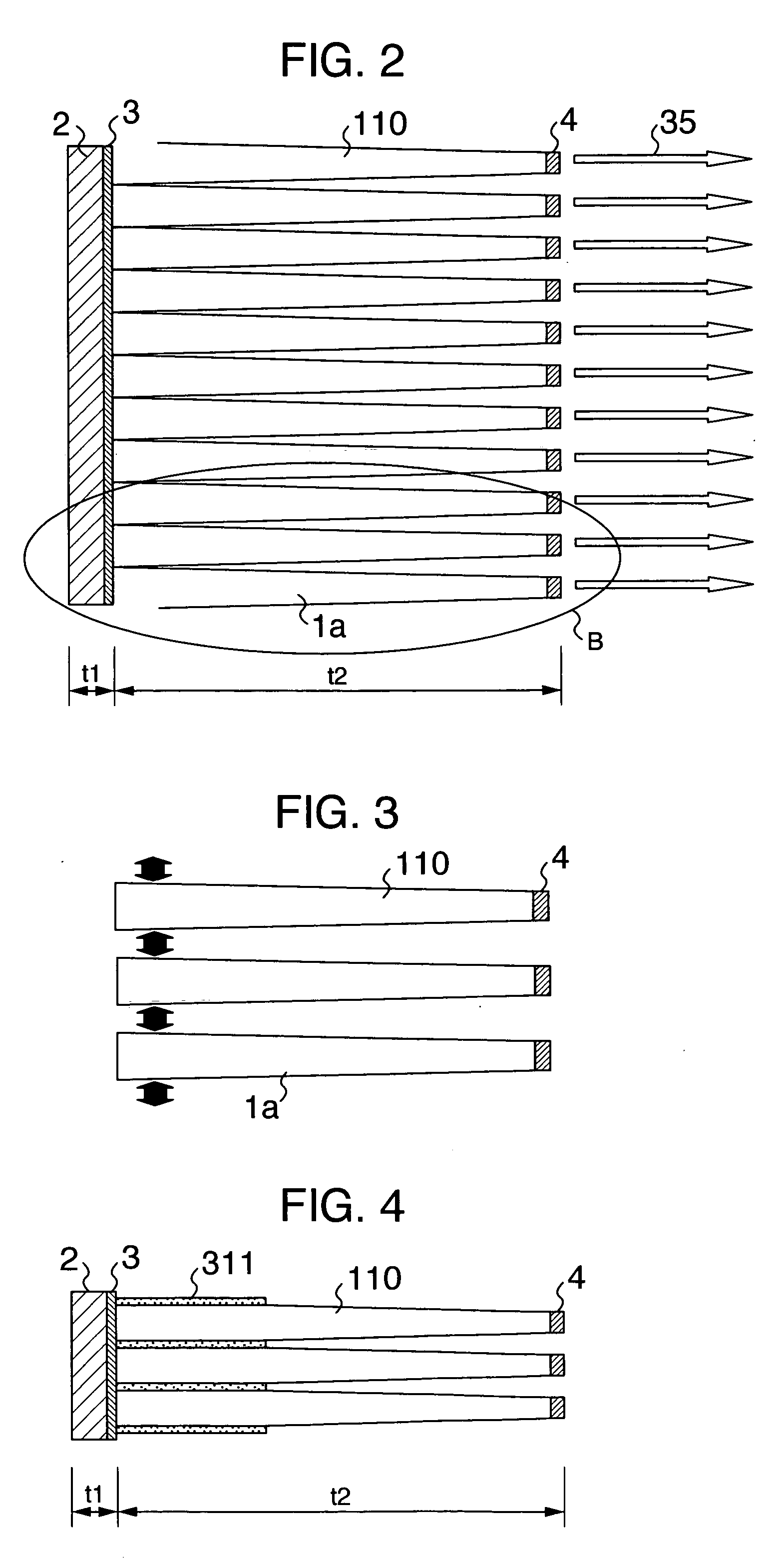Front plate and display device using same
a display device and front plate technology, applied in the field of display devices, can solve the problems of difficulty in combining prior art techniques with display panels, display which has a low light output efficiency, and common problems such as the attenuation of even emitted light from light emitting elements, and achieve the effect of improving image quality
- Summary
- Abstract
- Description
- Claims
- Application Information
AI Technical Summary
Benefits of technology
Problems solved by technology
Method used
Image
Examples
first embodiment
[0049]FIG. 2 is a schematic diagram generally showing, in an enlarged view, a portion A of the needle-shaped optical sheet in FIG. 1, which is the front plate according to a FIG. 3 shows frustrum-shaped protrusions which are individual elements of the needle-shaped optical sheet, depicting that they are bundled at the roots. FIG. 4 is an enlarged schematic diagram of a portion B in FIG. 2. This embodiment employs, as the frustrum-shaped protrusions, tapered frusto-conical fibers 1a, the diameter of which is different at both ends thereof. The tapered frusto-conical fibers 1a are bundled together.
[0050] In FIGS. 2, 3, 4, the frusto-conical fibers 1a are used as needle-shaped light guide paths 110 for guiding light from the display panel 2. The end faces having a larger diameter (thickness) of the frusto-conical fibers 1a are fixed by a black adhesive layer 311 or the like near the display panel 2, and implanted on the display panel 2 through a transparent adhesive layer 3 to make th...
third embodiment
[0069]FIG. 9 shows needle-shaped light guide paths of a front plate according to a As illustrated in FIG. 9, unlike FIG. 8, the concave groove 7 is not filled with the light absorbent 6, but instead, a light absorbing film 5 for absorbing light is disposed to cover the surface of the needle-shaped light guide paths 110, except for the diffusion surface 4 at the leading end of the protrusion, thereby reducing the reflectivity.
[0070] External light 20 incident into the concave groove 7 is absorbed by the light absorbing film 5 formed on the surface of the needle-shaped light guide paths 110 and attenuated, as shown in FIG. 9, as it repeats reflections. In this way, the bright-room contrast is further improved as compared with the first embodiment.
[0071] In this embodiment, when the frusto-conical fibers undergo surface processing, before they are bundled, for bundling them, optical processing can be implemented irrespective of the manufacturing method, thus increasing the degree of ...
PUM
| Property | Measurement | Unit |
|---|---|---|
| aspect ratio | aaaaa | aaaaa |
| cross-sectional area | aaaaa | aaaaa |
| area | aaaaa | aaaaa |
Abstract
Description
Claims
Application Information
 Login to View More
Login to View More - R&D
- Intellectual Property
- Life Sciences
- Materials
- Tech Scout
- Unparalleled Data Quality
- Higher Quality Content
- 60% Fewer Hallucinations
Browse by: Latest US Patents, China's latest patents, Technical Efficacy Thesaurus, Application Domain, Technology Topic, Popular Technical Reports.
© 2025 PatSnap. All rights reserved.Legal|Privacy policy|Modern Slavery Act Transparency Statement|Sitemap|About US| Contact US: help@patsnap.com



